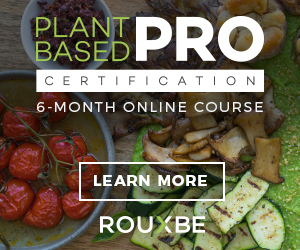Prepping Premium Steaks for Cooking
Preparing steak for cooking can be the difference between a juicy, tender result and a tough, dried-out result.

While temperature is critical, preparation is also key.
The best way to prepare your steak for grilling is to let it rest after you take it off the grill. This allows the juices to redistribute throughout the meat so that you get a juicy cut when you take your first bite.
Preparing steak for cooking can be the difference between a juicy, tender result and a tough, dried-out result.
Use the right tools
You'll want a sharp knife and cutting board to cut your meat into uniform pieces and tongs or pliers if you're grilling outdoors so that you don't burn yourself by handling hot pans with bare hands.
Use a meat thermometer
This is especially true if you're planning on cooking your steak in an oven instead of on the grill; otherwise, it's easy to overcook them or even accidentally undercook them if you don't pay close attention while they're baking. A good rule of thumb is 10 minutes per inch thickness (or temperature) when roasting or frying up meats like beef, pork, or lamb—but check with your cookbook for exact instructions before attempting any recipes.
Learn how to get started with the proper steak and prepare it for cooking to ensure a great result.
When you're ready to start cooking, consider the following tips
Don't over-season your steak. You can always add more seasoning if needed, but it's hard to correct if you go overboard in the first place. If you have time before cooking your steak, season it a little bit at a time until it tastes right.
Use a sharp knife when cutting your steak. A dull blade will tear or shred the meat instead of cutting cleanly through it—and while that may not seem like an issue when cooking other meats (because those tend not to be as tender), with beef and further premium cuts of meat it can lead to dryness and toughness without enough moisture left behind inside each piece for flavor absorption during the cooking process.
Steak Temperatures
The following instructions are for steaks that are 1-inch (2.54 cm) thick or less. If you have thicker steaks, increase the cooking times by 5 minutes per inch of thickness.
Rare steak is cooked to an internal temperature of 135 degrees Fahrenheit (57℃) (rare).
Medium rare steak is cooked to an internal temperature of 140 degrees Fahrenheit (57℃) (medium rare).
Medium steak is cooked to an internal temperature of 150 degrees Fahrenheit (66℃) (medium).
Cooking temperatures for steak range from rare to well done. The amount of time you keep your steak on the grill will depend mainly on the temperature of your grill, the thickness of your steak, and what temperature you want it cooked to.
A thermometer is the best way to determine if your grill is hot enough. You can purchase a simple probe model from any department store or online retailer. For thin cuts like filet mignon or strip steaks, we recommend cooking at about 400°F (200°C). For thicker cuts such as rib-eye and porterhouse steaks, we recommend cooking at about 450°F (230°C).
It would help if you also considered using a digital meat thermometer when testing doneness on thick steaks because they may require more time than thin ones on low-temperature grills that take longer to reach their ideal heat levels.
In general
Rare - 125°F (52°C) internal temp.; medium rare - 130°F (54°C); medium - 135–140 °F (57–60 °C); medium well - 145–150 °F (63–66 °C); well done - 155–160 °F(68–71 ° C).
Preparation Tips
Dry the Steak.
Using a paper towel, pat the steak dry. This will help prevent oil from splattering and keep your stovetop clean.
Cut the Steak into Portions.
Use a sharp knife to slice off any excess fat and silver skin that may be present on the steak surface. It's best to use a very sharp knife for this task so you don't end up with uneven cuts or slices that aren't as thick as you might like them.
Hold onto Your (Good) Meat With a Fork While Cutting it Into Portions.
Once you have removed all visible fat from around the perimeter of your steak, hold onto it with one hand while using your other hand's fingers or thumb to steady its back edge against something stable (like an empty plate). Then take your sharpened blade of choice over that same area where you just held onto it with one hand; once again, this will ensure even cuts across all portions of whatever piece is being prepared today.
Here are some tips to remember when preparing your steak for grilling.
Always marinate your steak before you grill it. This will give the meat more flavor and keep it moist while cooking. You can use a marinade or just let it sit overnight in olive oil and lemon juice. If you are cooking on an outdoor grill, ensure that the grates have been oiled down with vegetable oil before putting your steaks on them. This will help prevent them from sticking to the grates and coming off looking charred rather than browned and tasty.
Conclusion
Don’t forget the delicious cheese, mayonnaise, and mustard. You can add salt, pepper, and garlic powder to your steak. Mixing them in a small bowl will give you the perfect combination of flavors for your steak. When buying steaks for grilling, try to find ones that are well-marbled with fat. This will help keep them moist and tender while cooking.




